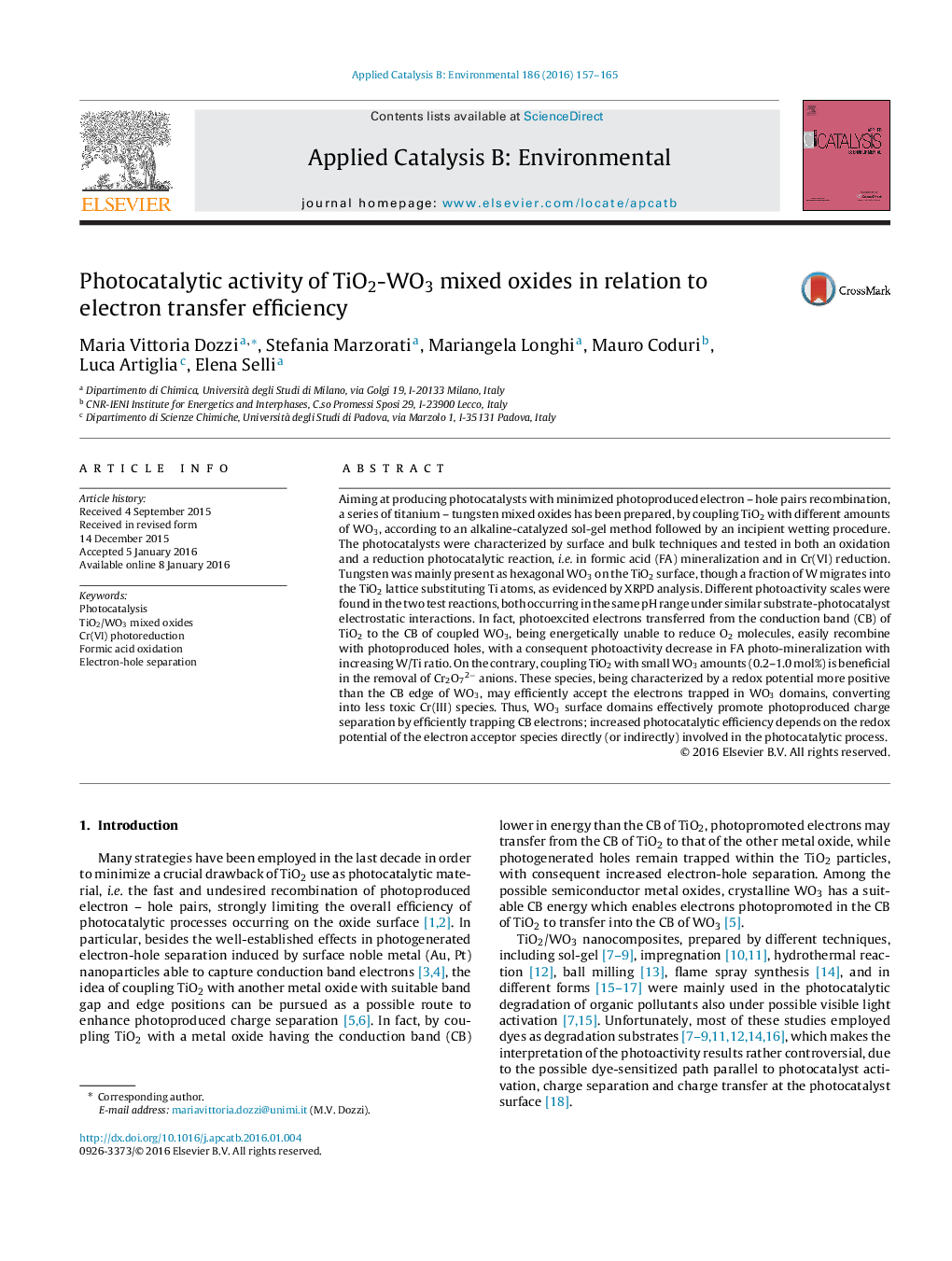| کد مقاله | کد نشریه | سال انتشار | مقاله انگلیسی | نسخه تمام متن |
|---|---|---|---|---|
| 44840 | 46367 | 2016 | 9 صفحه PDF | دانلود رایگان |

• TiO2/WO3 powders are prepared by combining sol-gel and incipient wetting procedures.
• WO3 surface domains play a key role in promoting electron-hole separation.
• Oxidation reactions are limited by the hampered electron transfer from WO3 to O2.
• An optimal WO3 amount allows efficient electron transfer for Cr(VI) reduction.
Aiming at producing photocatalysts with minimized photoproduced electron – hole pairs recombination, a series of titanium – tungsten mixed oxides has been prepared, by coupling TiO2 with different amounts of WO3, according to an alkaline-catalyzed sol-gel method followed by an incipient wetting procedure. The photocatalysts were characterized by surface and bulk techniques and tested in both an oxidation and a reduction photocatalytic reaction, i.e. in formic acid (FA) mineralization and in Cr(VI) reduction. Tungsten was mainly present as hexagonal WO3 on the TiO2 surface, though a fraction of W migrates into the TiO2 lattice substituting Ti atoms, as evidenced by XRPD analysis. Different photoactivity scales were found in the two test reactions, both occurring in the same pH range under similar substrate-photocatalyst electrostatic interactions. In fact, photoexcited electrons transferred from the conduction band (CB) of TiO2 to the CB of coupled WO3, being energetically unable to reduce O2 molecules, easily recombine with photoproduced holes, with a consequent photoactivity decrease in FA photo-mineralization with increasing W/Ti ratio. On the contrary, coupling TiO2 with small WO3 amounts (0.2–1.0 mol%) is beneficial in the removal of Cr2O72− anions. These species, being characterized by a redox potential more positive than the CB edge of WO3, may efficiently accept the electrons trapped in WO3 domains, converting into less toxic Cr(III) species. Thus, WO3 surface domains effectively promote photoproduced charge separation by efficiently trapping CB electrons; increased photocatalytic efficiency depends on the redox potential of the electron acceptor species directly (or indirectly) involved in the photocatalytic process.
Figure optionsDownload as PowerPoint slide
Journal: Applied Catalysis B: Environmental - Volume 186, 5 June 2016, Pages 157–165